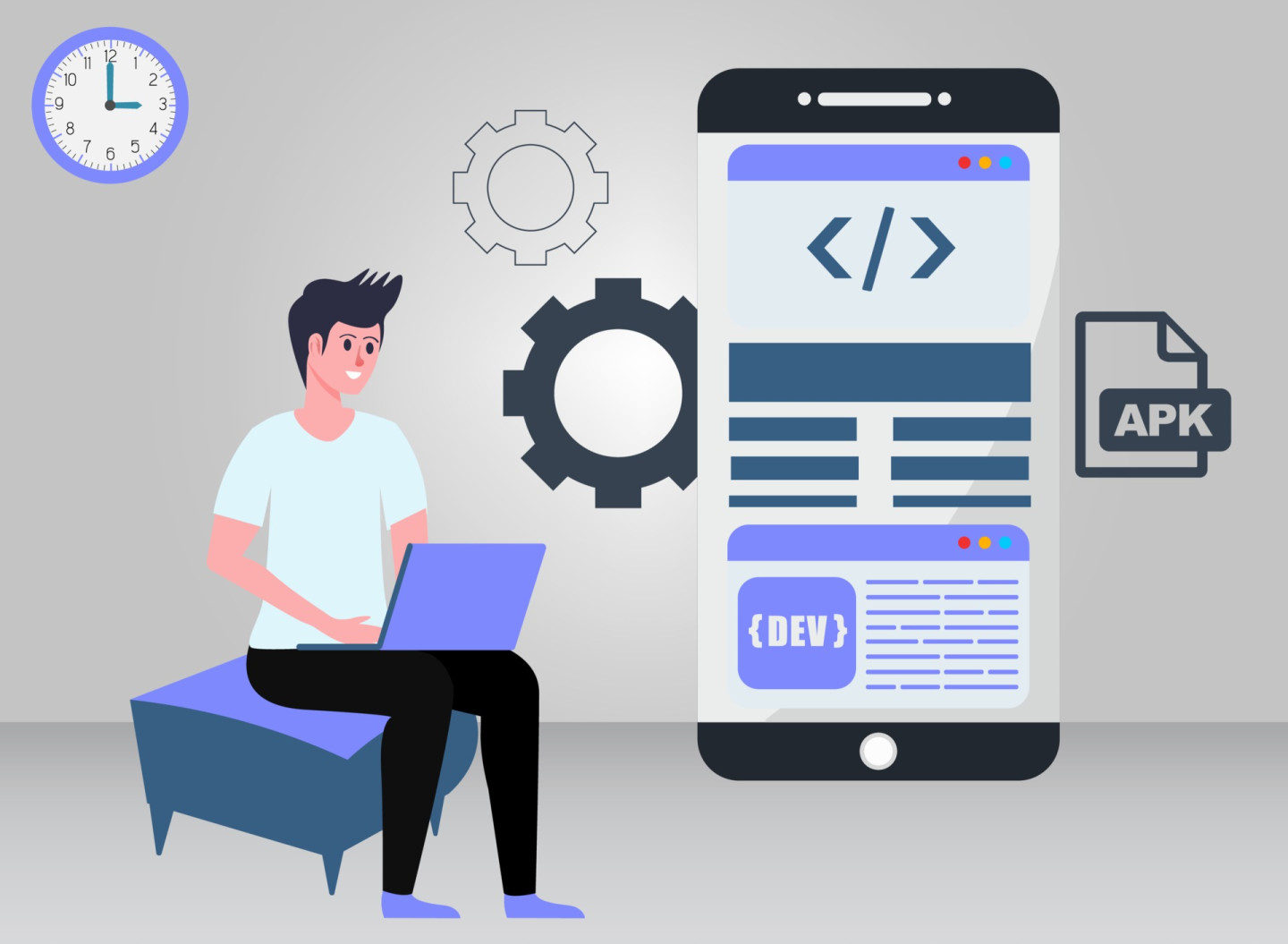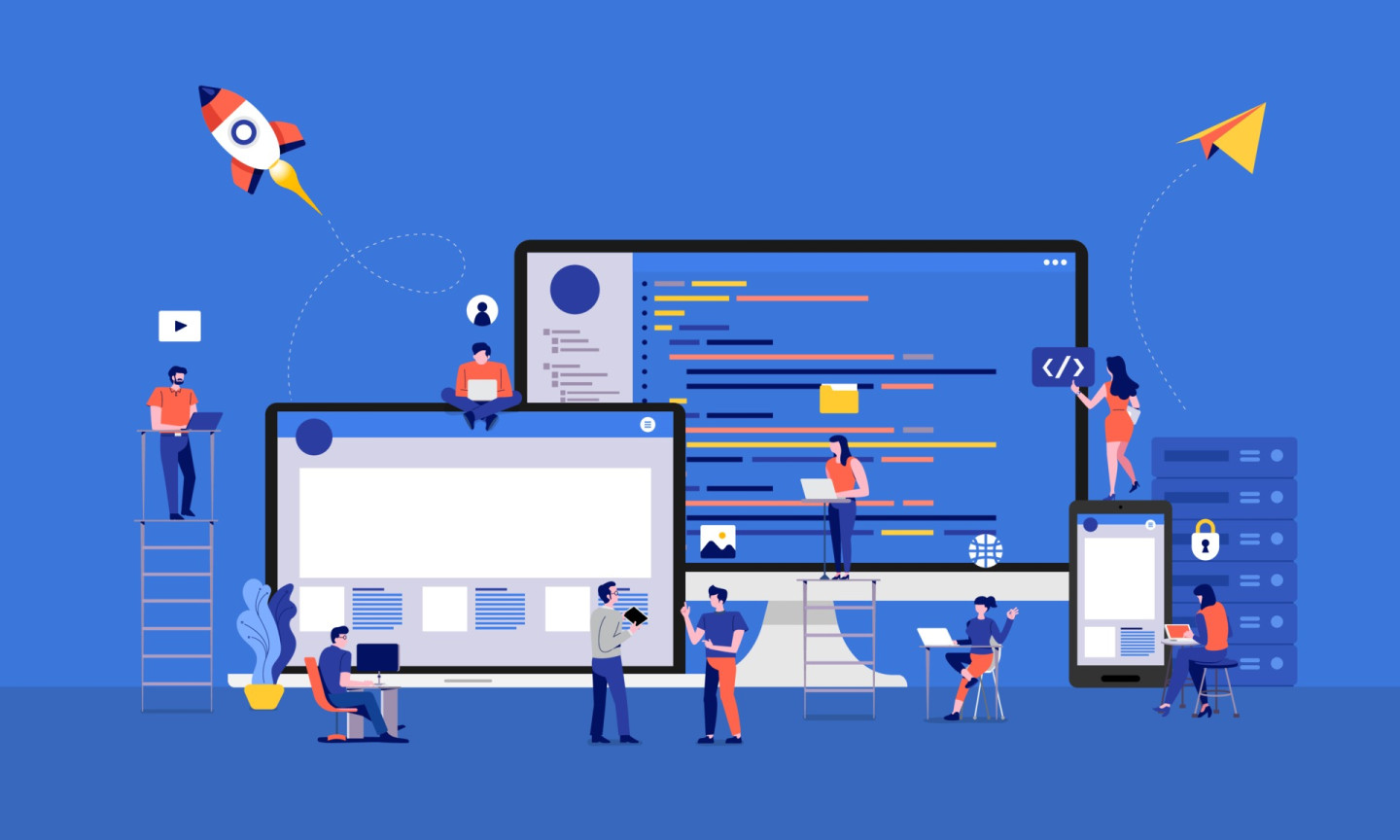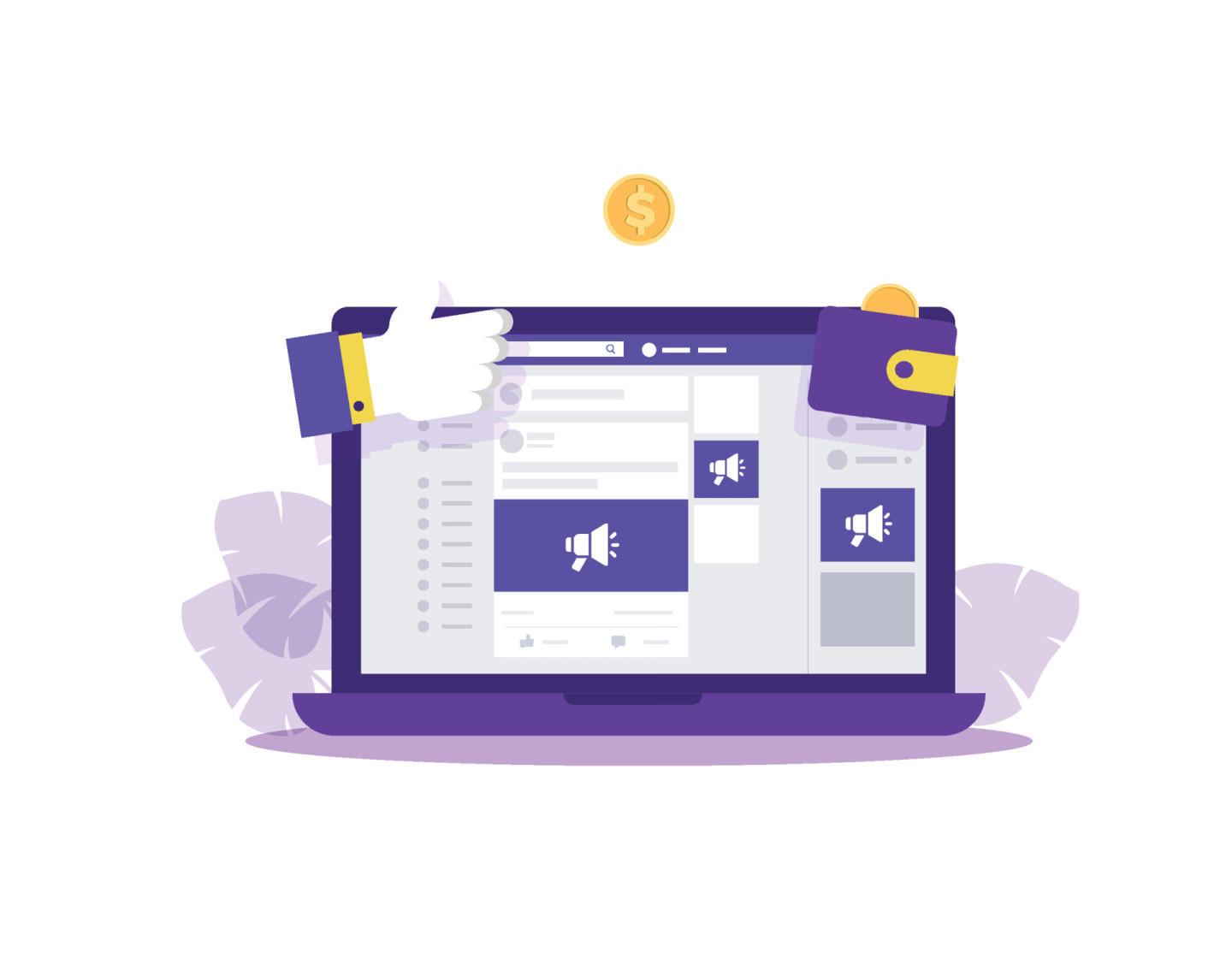What is App Localization and Why is it Important?
What is App Localization and Why is it Important?
Are you looking to make an online transfer? Chances are, you're using an app for it. Need to book a hotel? That's likely another app. Want to arrange food delivery? There's probably an app for that too. See the trend? Mobile applications are integral to our daily lives. While some apps target a global, English-speaking audience, you're likely using an app tailored specifically for your country and language. The magic behind this? Localization! Going global is essential, but it doesn't mean ignoring local markets' cultural and domestic preferences. Localization is a powerful tool that enables businesses to effectively connect with new markets.
When we talk about app localization, we're taking this concept to the next level. App localization is crucial for expanding your app’s reach, increasing download rates, and boosting revenue figures globally. This multifaceted method includes numerous steps and demands a well-planned strategy and advanced technology.
That's why we've crafted this article! We'll dive deep into app localization, explore why it matters for your business, how to implement it, and the stages involved in the process.
What is app localization?
Mobile application localization means tweaking an app's interface and features to engage users in various markets. It's more than just swapping languages—it's about making sure every part of your app, from UI elements and special features to in-app text, graphics, and App Store descriptions, aligns with your audience's cultural nuances and preferences.
What are the benefits of app localization?
While English may serve as a global communication bridge, people still select content in their own language. For businesses eyeing global success, app localization is a must. With billions of app users out there, relying solely on English won't cut it. Localization allows you to target users worldwide, maximizing your app's exposure and reach. Localizing your app can benefit your business in the following ways.
1. Expanding into new markets
Localization opens doors to market expansion. Consider how Spotify, originating in Sweden, now operates in numerous countries worldwide, enhancing its global user base and revenue streams.
Effective communication and brand awareness are key considerations here. Let's face it—not everyone speaks your language, and relying solely on translation tools can sometimes muddy the waters, losing the essence of your message along the way. It's not just about words; your visuals, emoticons, graphics, and cultural references need to strike a chord with your target audience, capturing their thoughts and emotions successfully. Localization ensures that your content speaks directly to local nuances, making it more impactful and fostering deeper connections. This, in turn, boosts brand awareness and recognition, which leaves a lasting impression on your audience.
2. Boosting user engagement
Boosting user engagement is crucial in our global market setting, where personalized experiences drive deeper connections with app users. When your app speaks their language and resonates with their cultural context, users are more likely to engage and remain loyal. This level of customization involves not merely translation, but also adapting user interface elements, content, and interactions to align with local preferences and behaviors.
For instance, when Airbnb expanded into China, they localized their app by translating it into Mandarin, integrating popular Chinese payment methods, and highlighting accommodations tailored to local tastes. This approach crafted an experience that felt native to Chinese users, fostering trust, satisfaction, and long-term engagement with the platform.
3. Increasing downloads
Localized App Store descriptions are a proven strategy to increase downloads in today's global app market, especially when they resonate with local audiences. For instance, when the language, tone, and cultural references in your App Store description align with the preferences of your target market, it enhances visibility and persuades more users to click "download".
An excellent example of effective app localization for increasing downloads is the game Clash Royale by Supercell. When Supercell localized Clash Royale for the Japanese market, they not only translated the App Store description into Japanese but also adapted it to reflect local gaming preferences and cultural nuances. This approach helped Clash Royale climb to the top of the charts in Japan, driving a surge in downloads and revenue from Japanese gamers who felt a strong connection to the localized version of the game.
4. Driving sales
Expanding your app's reach through localization into new countries broadens your market share and boosts revenue potential. While the return on investment (ROI) for localization varies, many Fortune 500 companies have experienced significant revenue growth as a result of these strategic investments.
For instance, multinational companies like Coca-Cola have successfully expanded their market presence by adapting their products and marketing strategies to fit local preferences and languages across diverse regions worldwide. This approach increases sales and reinforces brand loyalty and market penetration in new territories.
Types of app localization
Just like you can create a basic app with essential features to solve a specific problem and cater to a niche audience—often called a minimum viable product (MVP)—or go all out with its development, app localization can also vary in depth. It breaks down into two main types based on how extensive you want to go.
Minimum viable localization (MVL)
Minimum viable localization (MVL) focuses on localizing essential app features, App Store descriptions, and metadata. This approach is ideal for early-stage app startups aiming for a quick time to market and high ROI, requiring fewer resources than full-app localization.
For instance, when WhatsApp initially expanded into India, it employed MVL by translating key app features and adapting its App Store presence to resonate with local users. This strategic localization allowed them to rapidly gain traction in a diverse and competitive market, showcasing the effectiveness of targeted localization efforts.
Full app localization
Full app localization is crucial for global app companies dedicated to maximizing their app's reach, user base, revenue potential, and ROI across various markets. This approach involves customizing every aspect of the app for each target market, including App Store localization. Full app localization ensures that users in different regions feel completely at home when using your app.
A prime example of extensive app localization can be observed in Spotify's strategy. With operations spanning numerous countries and supporting multiple languages, Spotify has localized not only its app interface but also its content libraries and recommendations to cater to diverse cultural preferences. This approach allows Spotify to provide a personalized and immersive music streaming experience worldwide, driving engagement and loyalty among its global user base.
This localization strategy demonstrates how adapting an app comprehensively for different markets can significantly boost user satisfaction and business performance.
How to implement localization in your app?
To do localization right, you’ve got to take a strategic approach and set up a good plan. This order reflects a logical progression from initial planning and resource gathering through to execution, optimization, and measurement of the app localization process. Your strategy should consider the following points:
Market and strategy
-
What markets will you localize your app for?
-
Will you launch in-region first or go global from the start?
Planning and budgeting
-
What’s your app localization timeline or roadmap?
-
What’s your localization budget?
Language service providers and teams
-
What language service providers will you use?
-
Who’ll be in charge of localization?
-
What stakeholders will you include in your localization workflow?
Prioritization and resource collection
-
What parts of your app will you prioritize for localization?
-
How will you collect resources other than code for localization, such as content, images, and videos?
Cultural considerations and collaboration
-
What do cultural differences mean for your communication style?
-
How will all teams involved collaborate?
Process management and quality assurance
-
How will you monitor the process?
-
What app localization platform will you use?
-
How will you conduct linguistic quality assurance (LQA)?
-
How will you test the localized versions of your app?
Optimization and iteration
-
Will you conduct App Store optimization?
-
How will you avoid bottlenecks and delays?
-
How will you iterate based on App Store feedback?
Metrics and success measurement
-
What metrics and KPIs will you track?
-
How will you measure success?
This organized list provides a framework for effectively planning and implementing app localization, ensuring thorough consideration of key factors from strategy and resource allocation to execution and performance evaluation. Keep in mind that feedback throughout the localization process is crucial for optimizing and refining your app's global presence.
Key business stages for considering app localization
Considering app localization involves strategic decision-making at various critical stages of your business journey. From initial market research to post-launch growth phases and beyond, understanding when and why to localize your app can seriously impact its success in diverse international markets. Here, we outline key stages highlighting the role of app localization:
-
Initial market research: During the early stages of market research, if you identify strong demand for your app in regions with different languages.
-
Pre-launch planning: Before launching your app, if your go-to-market strategy includes targeting multiple regions with different languages right from the start.
-
Post-launch growth phase: After your initial launch and when you are planning to scale your user base by entering new international markets.
-
User acquisition and feedback: When you have acquired users from various regions and receive feedback indicating a need for language support and cultural adaptation.
-
Monetization strategy: When planning to monetize through in-app purchases or ads, you identify the potential for increased revenue from localized versions.
-
Competitive pressure: When competitors have localized their apps and are gaining traction in international markets, prompting you to localize to stay competitive.
-
Product-market fit: Once you have established product-market fit in your primary market and are looking to replicate that success in other regions.
-
Investment and funding rounds: When seeking investment during funding rounds, demonstrating the potential for global reach and expansion through localization can be compelling to investors.
-
Compliance and partnerships: When forming partnerships or entering regions with specific legal requirements for localization, or when localization is a prerequisite for compliance.
-
Customer support scalability: When scaling your customer support team to handle inquiries in multiple languages, indicating a need for a localized app to improve user satisfaction.
The final word
Localizing your app can significantly expand its global reach and boost user engagement. By tailoring your app to meet the linguistic and cultural needs of various markets, you can create a more inclusive and user-friendly experience, drive higher downloads, boost user engagement, and ultimately increase your revenue. It's crucial to assess the right stage in your business cycle to initiate localization—whether during initial market research, pre-launch planning, or post-launch growth. Thorough planning and consistent efforts are essential for successful localization.
Ready to take your app to the next level? Partner with us for expert localization services that ensure your app resonates with users worldwide. Contact us today to get started!
Ready to take your app to the next level?
Are you looking to make an online transfer? Chances are, you're using an app for it. Need to book a hotel? That's likely another app. Want to arrange food delivery? There's probably an app for that too. See the trend? Mobile applications are integral to our daily lives. While some apps target a global, English-speaking audience, you're likely using an app tailored specifically for your country and language.
The magic behind this? Localization! Going global is essential, but it doesn't mean ignoring local markets' cultural and domestic preferences. Localization is a powerful tool that enables businesses to effectively connect with new markets.
When we talk about app localization, we're taking this concept to the next level. App localization is crucial for expanding your app’s reach, increasing download rates, and boosting revenue figures globally. This multifaceted method includes numerous steps and demands a well-planned strategy and advanced technology.
That's why we've crafted this article! We'll dive deep into app localization, explore why it matters for your business, how to implement it, and the stages involved in the process.
What is app localization?
Mobile application localization means tweaking an app's interface and features to engage users in various markets. It's more than just swapping languages—it's about making sure every part of your app, from UI elements and special features to in-app text, graphics, and App Store descriptions, aligns with your audience's cultural nuances and preferences.
What are the benefits of app localization?
While English may serve as a global communication bridge, people still select content in their own language. For businesses eyeing global success, app localization is a must. With billions of app users out there, relying solely on English won't cut it. Localization allows you to target users worldwide, maximizing your app's exposure and reach. Localizing your app can benefit your business in the following ways.
1. Expanding into new markets
Localization opens doors to market expansion. Consider how Spotify, originating in Sweden, now operates in numerous countries worldwide, enhancing its global user base and revenue streams.
Effective communication and brand awareness are key considerations here. Let's face it—not everyone speaks your language, and relying solely on translation tools can sometimes muddy the waters, losing the essence of your message along the way. It's not just about words; your visuals, emoticons, graphics, and cultural references need to strike a chord with your target audience, capturing their thoughts and emotions successfully. Localization ensures that your content speaks directly to local nuances, making it more impactful and fostering deeper connections. This, in turn, boosts brand awareness and recognition, which leaves a lasting impression on your audience.
2. Boosting user engagement
Boosting user engagement is crucial in our global market setting, where personalized experiences drive deeper connections with app users. When your app speaks their language and resonates with their cultural context, users are more likely to engage and remain loyal. This level of customization involves not merely translation, but also adapting user interface elements, content, and interactions to align with local preferences and behaviors.
For instance, when Airbnb expanded into China, they localized their app by translating it into Mandarin, integrating popular Chinese payment methods, and highlighting accommodations tailored to local tastes. This approach crafted an experience that felt native to Chinese users, fostering trust, satisfaction, and long-term engagement with the platform.
3. Increasing downloads
Localized App Store descriptions are a proven strategy to increase downloads in today's global app market, especially when they resonate with local audiences. For instance, when the language, tone, and cultural references in your App Store description align with the preferences of your target market, it enhances visibility and persuades more users to click "download".
An excellent example of effective app localization for increasing downloads is the game Clash Royale by Supercell. When Supercell localized Clash Royale for the Japanese market, they not only translated the App Store description into Japanese but also adapted it to reflect local gaming preferences and cultural nuances. This approach helped Clash Royale climb to the top of the charts in Japan, driving a surge in downloads and revenue from Japanese gamers who felt a strong connection to the localized version of the game.
4. Driving sales
Expanding your app's reach through localization into new countries broadens your market share and boosts revenue potential. While the return on investment (ROI) for localization varies, many Fortune 500 companies have experienced significant revenue growth as a result of these strategic investments.
For instance, multinational companies like Coca-Cola have successfully expanded their market presence by adapting their products and marketing strategies to fit local preferences and languages across diverse regions worldwide. This approach increases sales and reinforces brand loyalty and market penetration in new territories.
Types of app localization
Just like you can create a basic app with essential features to solve a specific problem and cater to a niche audience—often called a minimum viable product (MVP)—or go all out with its development, app localization can also vary in depth. It breaks down into two main types based on how extensive you want to go.
Minimum viable localization (MVL)
Minimum viable localization (MVL) focuses on localizing essential app features, App Store descriptions, and metadata. This approach is ideal for early-stage app startups aiming for a quick time to market and high ROI, requiring fewer resources than full-app localization.
For instance, when WhatsApp initially expanded into India, it employed MVL by translating key app features and adapting its App Store presence to resonate with local users. This strategic localization allowed them to rapidly gain traction in a diverse and competitive market, showcasing the effectiveness of targeted localization efforts.
Full app localization
Full app localization is crucial for global app companies dedicated to maximizing their app's reach, user base, revenue potential, and ROI across various markets. This approach involves customizing every aspect of the app for each target market, including App Store localization. Full app localization ensures that users in different regions feel completely at home when using your app.
A prime example of extensive app localization can be observed in Spotify's strategy. With operations spanning numerous countries and supporting multiple languages, Spotify has localized not only its app interface but also its content libraries and recommendations to cater to diverse cultural preferences. This approach allows Spotify to provide a personalized and immersive music streaming experience worldwide, driving engagement and loyalty among its global user base.
This localization strategy demonstrates how adapting an app comprehensively for different markets can significantly boost user satisfaction and business performance.
How to implement localization in your app?
To do localization right, you’ve got to take a strategic approach and set up a good plan. This order reflects a logical progression from initial planning and resource gathering through to execution, optimization, and measurement of the app localization process. Your strategy should consider the following points:
Market and strategy
-
What markets will you localize your app for?
-
Will you launch in-region first or go global from the start?
Planning and budgeting
-
What’s your app localization timeline or roadmap?
-
What’s your localization budget?
Language service providers and teams
-
What language service providers will you use?
-
Who’ll be in charge of localization?
-
What stakeholders will you include in your localization workflow?
Prioritization and resource collection
-
What parts of your app will you prioritize for localization?
-
How will you collect resources other than code for localization, such as content, images, and videos?
Cultural considerations and collaboration
-
What do cultural differences mean for your communication style?
-
How will all teams involved collaborate?
Process management and quality assurance
-
How will you monitor the process?
-
What app localization platform will you use?
-
How will you conduct linguistic quality assurance (LQA)?
-
How will you test the localized versions of your app?
Optimization and iteration
-
Will you conduct App Store optimization?
-
How will you avoid bottlenecks and delays?
-
How will you iterate based on App Store feedback?
Metrics and success measurement
-
What metrics and KPIs will you track?
-
How will you measure success?
This organized list provides a framework for effectively planning and implementing app localization, ensuring thorough consideration of key factors from strategy and resource allocation to execution and performance evaluation. Keep in mind that feedback throughout the localization process is crucial for optimizing and refining your app's global presence.
Key business stages for considering app localization
Considering app localization involves strategic decision-making at various critical stages of your business journey. From initial market research to post-launch growth phases and beyond, understanding when and why to localize your app can seriously impact its success in diverse international markets. Here, we outline key stages highlighting the role of app localization:
-
Initial market research: During the early stages of market research, if you identify strong demand for your app in regions with different languages.
-
Pre-launch planning: Before launching your app, if your go-to-market strategy includes targeting multiple regions with different languages right from the start.
-
Post-launch growth phase: After your initial launch and when you are planning to scale your user base by entering new international markets.
-
User acquisition and feedback: When you have acquired users from various regions and receive feedback indicating a need for language support and cultural adaptation.
-
Monetization strategy: When planning to monetize through in-app purchases or ads, you identify the potential for increased revenue from localized versions.
-
Competitive pressure: When competitors have localized their apps and are gaining traction in international markets, prompting you to localize to stay competitive.
-
Product-market fit: Once you have established product-market fit in your primary market and are looking to replicate that success in other regions.
-
Investment and funding rounds: When seeking investment during funding rounds, demonstrating the potential for global reach and expansion through localization can be compelling to investors.
-
Compliance and partnerships: When forming partnerships or entering regions with specific legal requirements for localization, or when localization is a prerequisite for compliance.
-
Customer support scalability: When scaling your customer support team to handle inquiries in multiple languages, indicating a need for a localized app to improve user satisfaction.




Recent Comments